Trickle-down, space-probe inspired technology, wrapped in Day-Glo paint, brings a great deal of value to the IEM table.
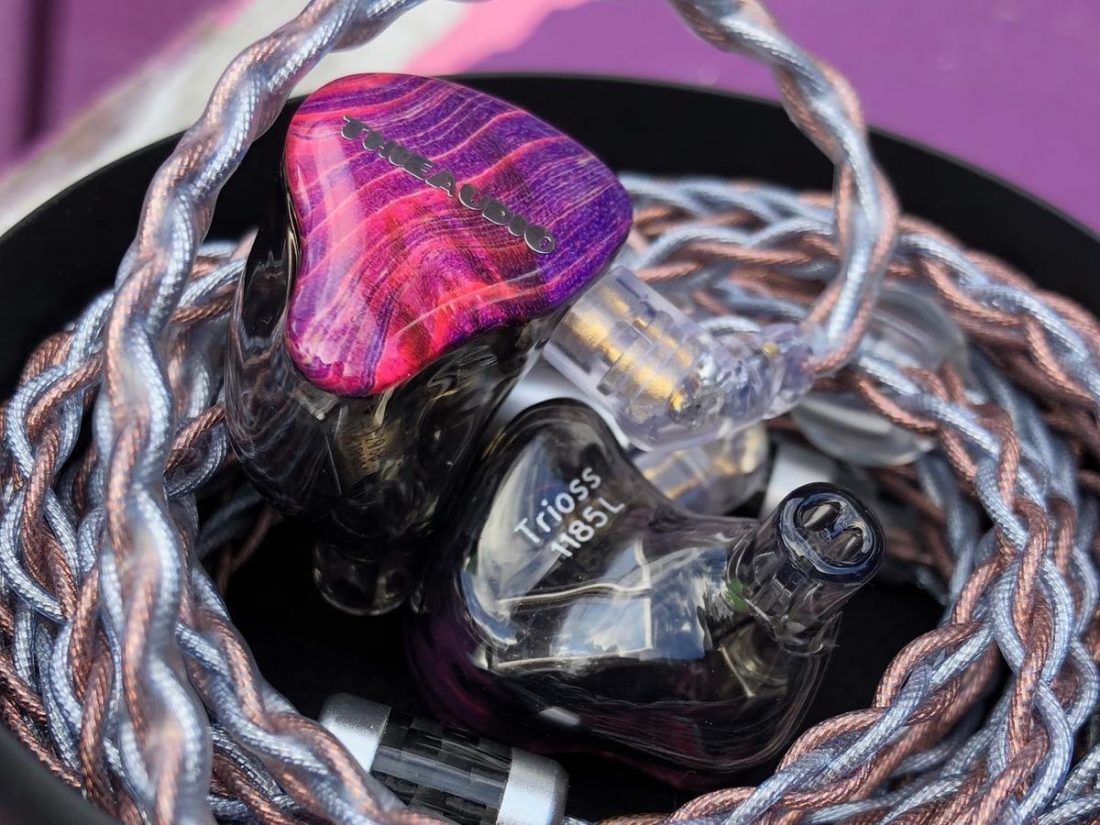
Thieaudio is another Chi-Fi brand that has gained some notoriety with a range of well-reviewed and interesting headphones. There was a lot of excitement when they released the (relatively) inexpensive Phantom planar magnetic headphones. Their (somehow related – sister company?) HarmonicDyne Helios headphones recently caused another stir.
However, it is their two-model Voyager IEM lineup that is currently the most interesting. At the top is the Voyager 14 ($1000 USD), with 14 balanced armatures (BAs), four sound bores per channel, and 5-way crossover technology. Thieaudio claims it was designed to “set new bars as to what professional earphones can achieve… Our standard tuning on the Voyager (14) reflects a true-referencing tuning for professional monitoring.”
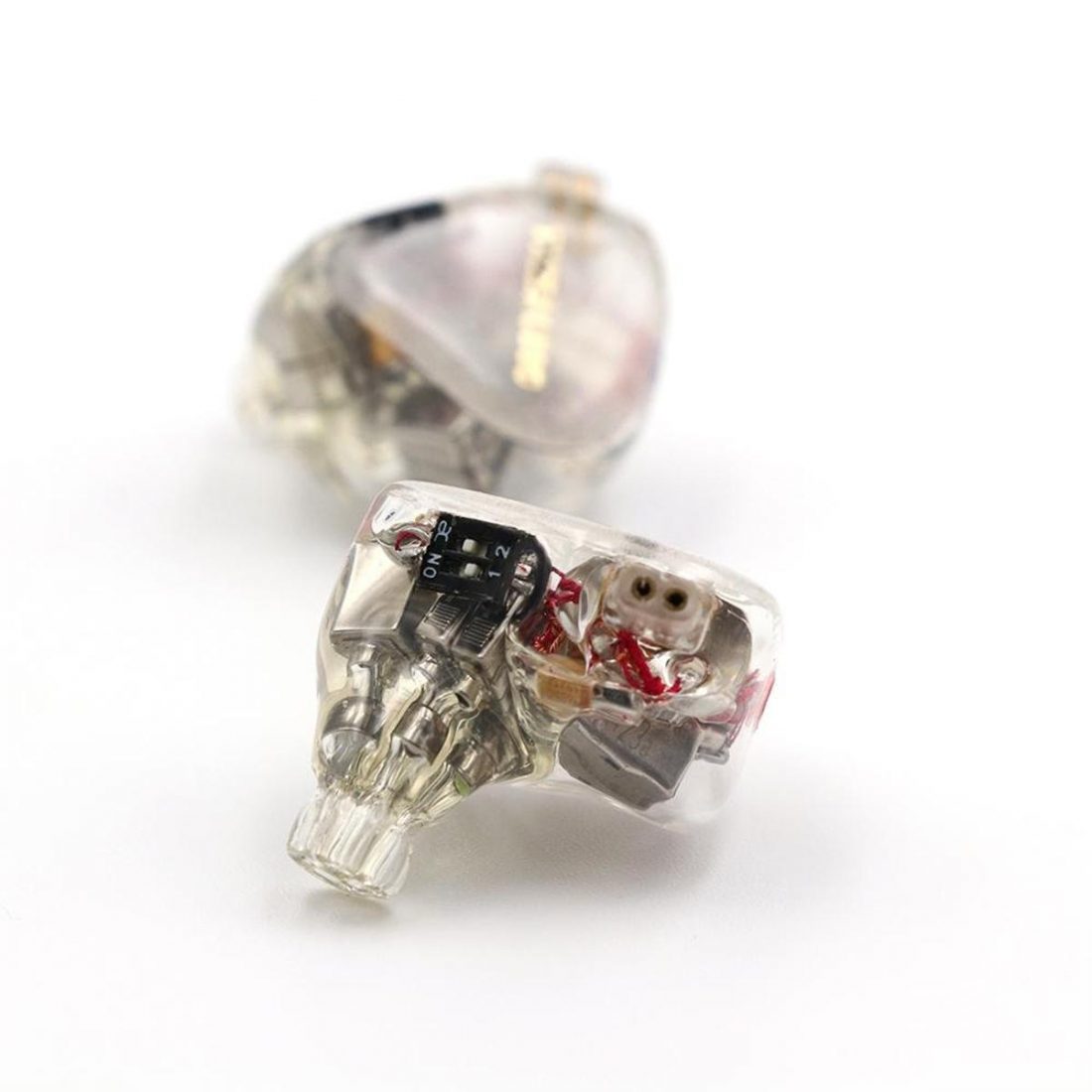
Today we’re going to take a look at the much humbler Voyager 3. As the name implies, each Voyager 3 IEM contains three Knowles balanced armatures, as well as 3-way crossover technology, and two sound bores.
But due to its high-end heritage, can the Voyager 3 perform beyond its reasonable ($160 USD) price point? One reason it stands out in the uniform land of Chi-Fi IEMs is that the Voyager 3 features two physical switches (per side) to tune the level of bass and treble – the same EQ mechanism that is found in the flagship Voyager 14.
Let’s find out what it’s all about.
- Detailed and natural sound signature.
- User-selectable hardware EQ switches.
- Top-notch quality cable.
- High level of isolation.
- Very good construction.
- Meaningless labels for the EQ switches.
- Somewhat large size may not be comfortable for all.
- Sparse included accessory bundle.
- No instruction manual?
- High sensitivity may lead to unwanted noise with some sources.
Company Overview
If you’ve read my previous reviews, you’ll know that I like to stuff them full with as much extraneous, (err… let’s call it) background information as possible. I try to fully research the company and have a good understanding of its design and philosophy.
That being said, Thieaudio doesn’t seem to have even so much as a website. Their Facebook page is almost entirely devoid of information, save for a few product pictures. They are located in China. They make headphones. And that’s about all I know.
Specifications
- Crossover: 3-way crossover
- Driver Type: Knowles Balanced Armatures (BA)
- Bass Driver: Knowles CI-22955
- Midrange Driver: Knowles 22955
- Treble Driver: Knowles ED-29869
- Noise Cancellation: 26dB
- Sensitivity: 113 dB at 1 kHz
- Impedance: 14 Ohm at 1 kHz
- IEM Connector: Recessed 0.78 mm 2-Pin
- Cable Plug: 3.5 mm Unbalanced
- Cable Length: 1.2 m
- Cable Material: 8-Core Silver-Plated Copper
- Weight: 17g
Packaging
I originally assumed the very sparse packaging and accessories I received was due to this being a review pair. However, after talking to folks about the Voyager 3, what I received is pretty much what is to be expected in the box.
In an unmarked brown cardboard box, I found the round metal case. Nestled inside the diminutive case, were the IEMs and all the accessories.
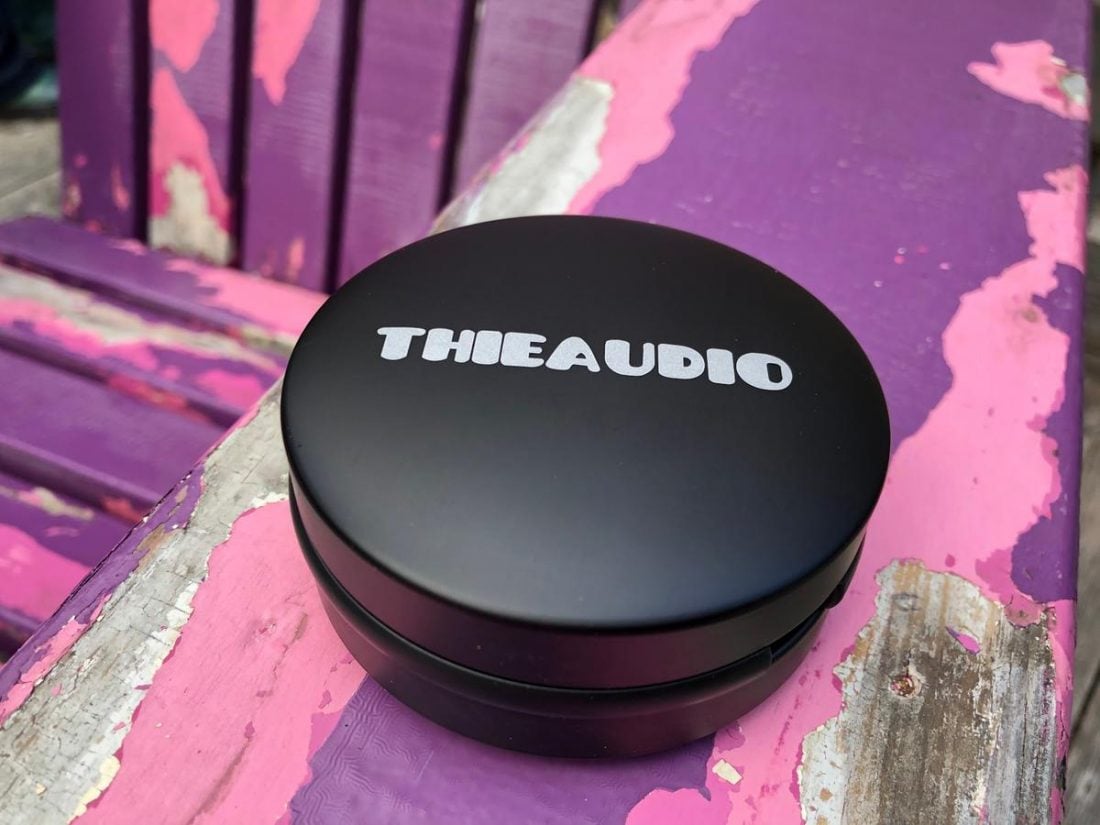
In the Box
- Thieaudio Voyager 3 IEMs
- 3 pairs of silicon ear tips (S, M, L)
- 8-core detachable cable
- SIM card ejector tool (yup, just like you’d get with your iPhone)
- Round, metal carrying case
Pretty sparse offerings compared to some IEMs with more generous included accessories, but it does cover the basics. The included SIM card tool confused me until I tried to adjust the EQ hardware switches. They are minuscule and the SIM card tool is perfect for the job.
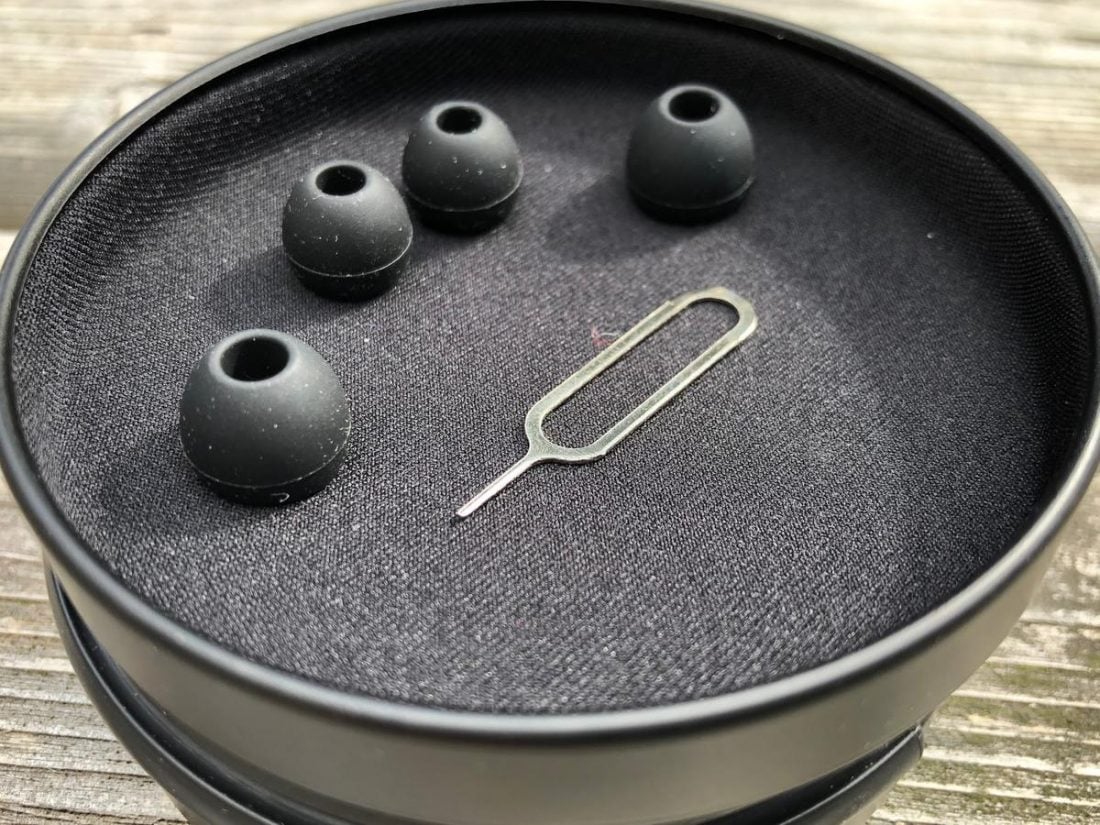
On this topic, and of note, there was no instruction manual included. But why would an experienced and intrepid reviewer require a manual? It’s because of those pesky switches. They are oh-so-helpfully labeled 1 and 2. For further informational purposes, above 1 it says “ON” and above switch 2 it says “KE”. Uh-huh. Clear as ‘on-ke’?
Cable
The Voyager 3 cable is a major checkmark on the positive list. It may be the nicest included IEM cable I’ve seen to date. The silver-plated copper 8-core wire is soft, malleable, and is beautifully braided. Length is just right (1.2 m) and I found it almost entirely non-microphonic.
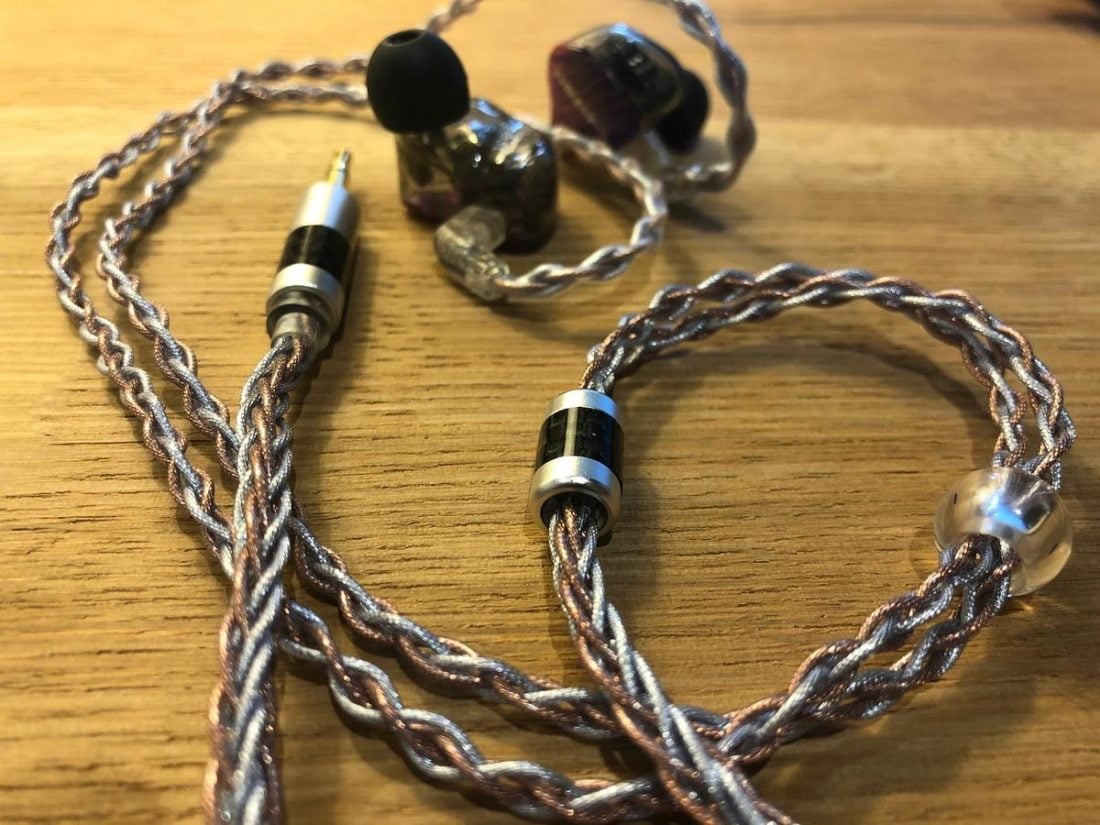
Thieaudio claims that the cable “is fit to deliver the perfect sonic properties… an ultra-pure eight-core silver-plated OCC copper cable… comfortable for both long on-stage performances as well as listening sessions.” And who am I to argue with that sort of marketing lingo?
The 3.5 mm plug and y-split are made of the currently popular combination of silver metal with carbon fiber highlights. There is a clear plastic cinch for tightening up the cable under the chin.
To the delight of some (and the condemnation of others), Thieaudio decided on 0.78 mm 2-pin connectors, which they claim has better longevity than MMCX connectors. The sockets protrude from each IEM much like the recent KZ ZSX and ZS10 Pro IEMs, allowing the use of a compatible KZ Bluetooth cable (or of course using the lovely Voyager 3 cable with the KZ IEMs).
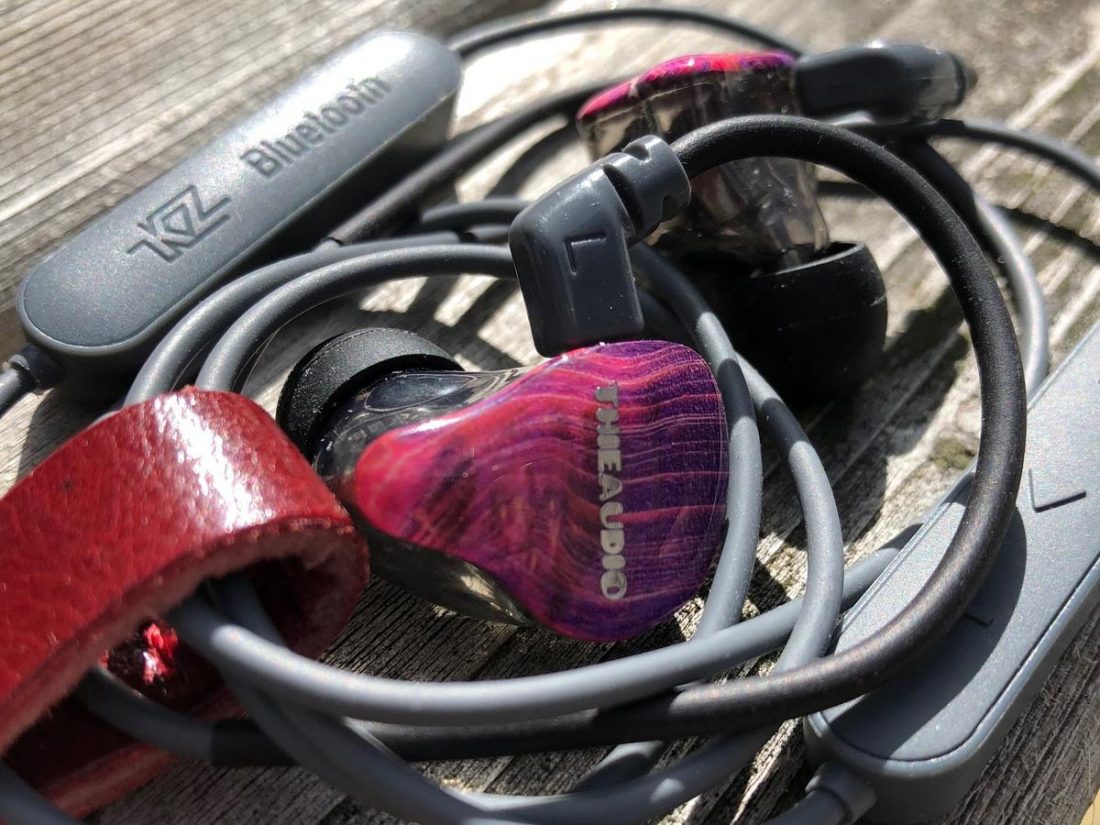
Design
The Voyager 3 is an all resin bodied IEM. Most of it is crystal clear, but the cap surface contains a wood-grain panel (which seems to be trendy right now with IEMs). The colorway is what makes this wood panel unique.
Most of the marketing literature I’ve seen shows the wood panel as mainly grape Kool-Aid purple with a few pink highlights. As you can see in the pictures, my set contains at least as much bright pink as purple. They are reminiscent of 1980s Ocean Pacific (OP) Day-Glo surf wear. Oh, nostalgia. Young me would want a surfboard made of this stuff.
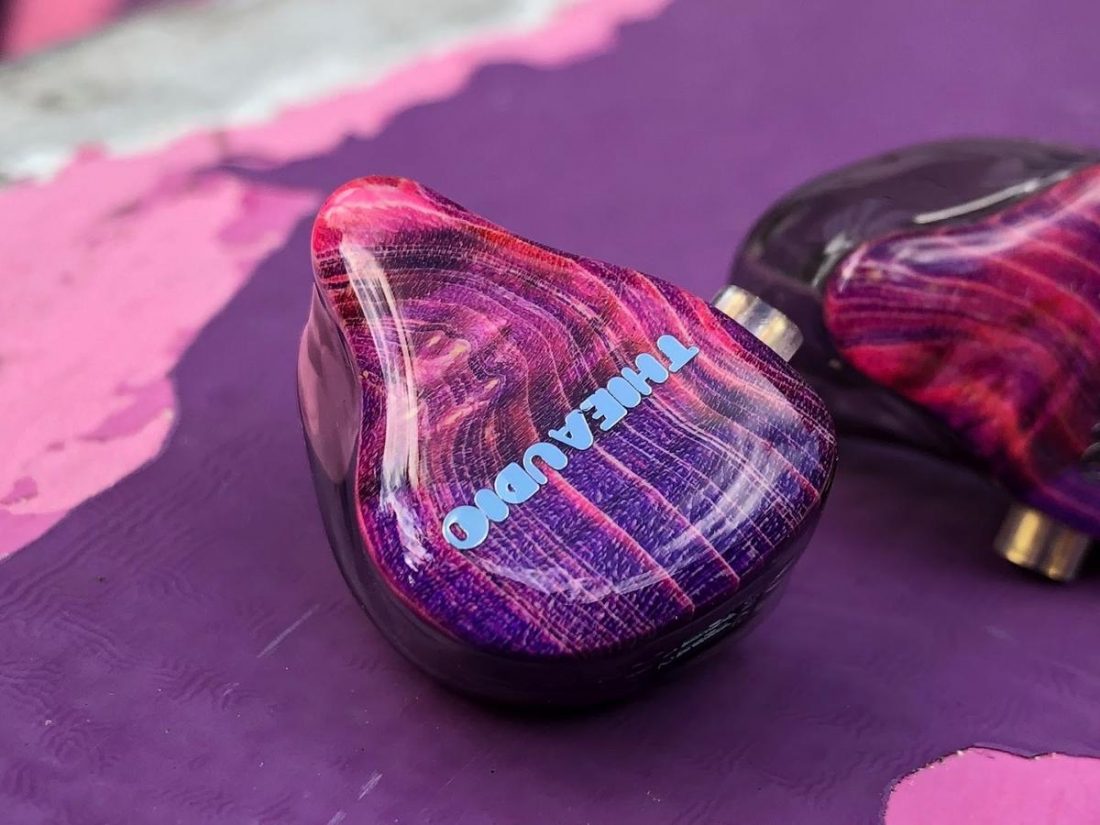
Thieaudio claims that they were striving for the ‘perfect fit’ and to “…ensure a perfect seal, we elongated the reach of the stem and the base to comfortably match every ear. Analyzing many human ear moulds, we adopted the perfect contours of the housing body to nestle along the outer cavity of the ear.”
Likely because of all this, the Voyager 3 are very comfortable as long as your ears can fit medium-large sized IEMs. They are substantially larger than the Moondrop Starfield and somewhat larger than the Shozy Form 1.4. The fit and finish are smooth and impeccable, and the medical-grade acrylic resin is clear enough to easily view all the internal components.
Since these fit snugly in the ear, protrude fairly deeply into the ear canal, and are not vented, the Voyager 3 are rated for up to 32dB of noise isolation which Thieaudio claims “…is perfect for both the stage and busy daily commutes.” They really do cut out the majority of outside noise.
A few other design factors set the Voyager 3 apart from the competition. The inclusion of two tiny physical EQ switches set flush within the body of each IEM is certainly unique. In addition, rather than a single nozzle and internal mesh filter, the Voyager 3 have two sound bore holes molded within the resin.
Sound Bores
The term ‘sound bore’ is typically used when referring to molded resin hearing aids, and describes part of the nozzle shaped to fit into the ear canal. The nozzle will have one or more holes (or ‘bores’) in the molded material where the sound comes out.
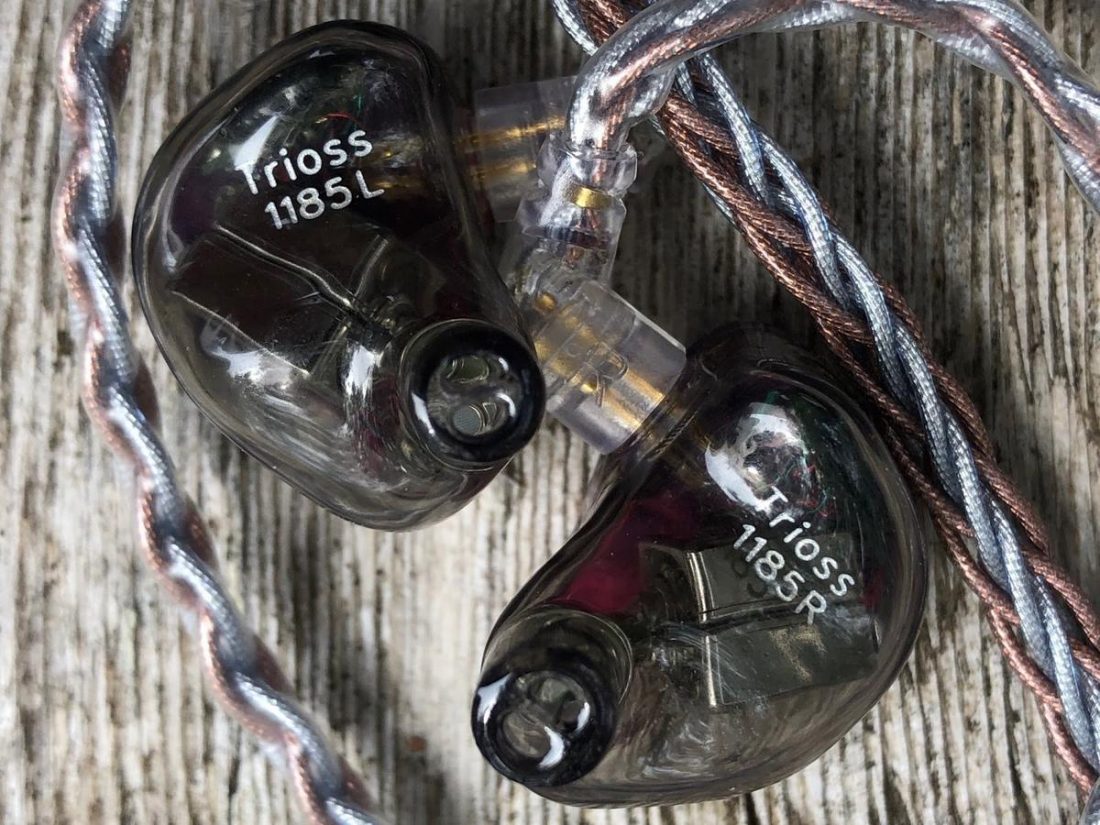
The other end of the bore leads to the drivers inside the IEM (or hearing aid). The bore may be shaped with a constant diameter, or it may be gradated or horn-shaped to tune and change the higher frequency sounds.
Internals
One big difference between the Voyager 3 and other lesser Chi-Fi offerings, is the use of high quality and industry-standard Knowles BA drivers. Two American-made Knowles CI-22955 balanced armature drivers handle bass and midrange duties. The CI-22955 is one of the largest single driver BA that Knowles produces. Treble is reproduced by a Knowles ED-29869 balanced armature driver.
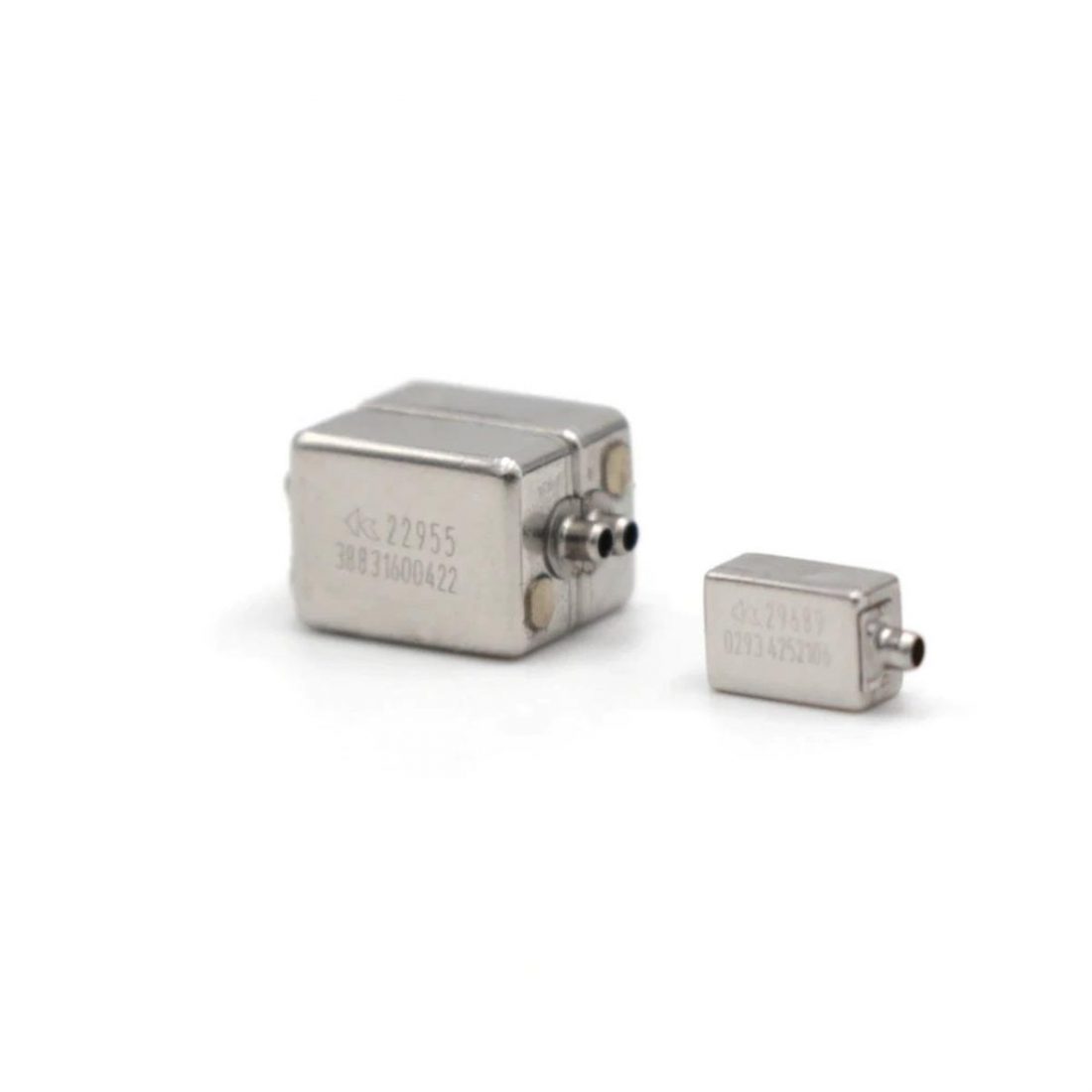
To split the music between the drivers, there is a 3-way crossover system that utilizes low-, mid- and high-pass filters. In addition, the crossover is matched with the two separate sound bores at the stem to further enhance distinct frequency separation.
Thieaudio claims that “…by integrating two of the same driver models for the low and mids separately, we achieved an extremely coherent low-mid presentation that is also free of frequency overlap.”
EQ Switches
Oh, those fascinatingly obtuse switches. At first glance, their function should be obvious.
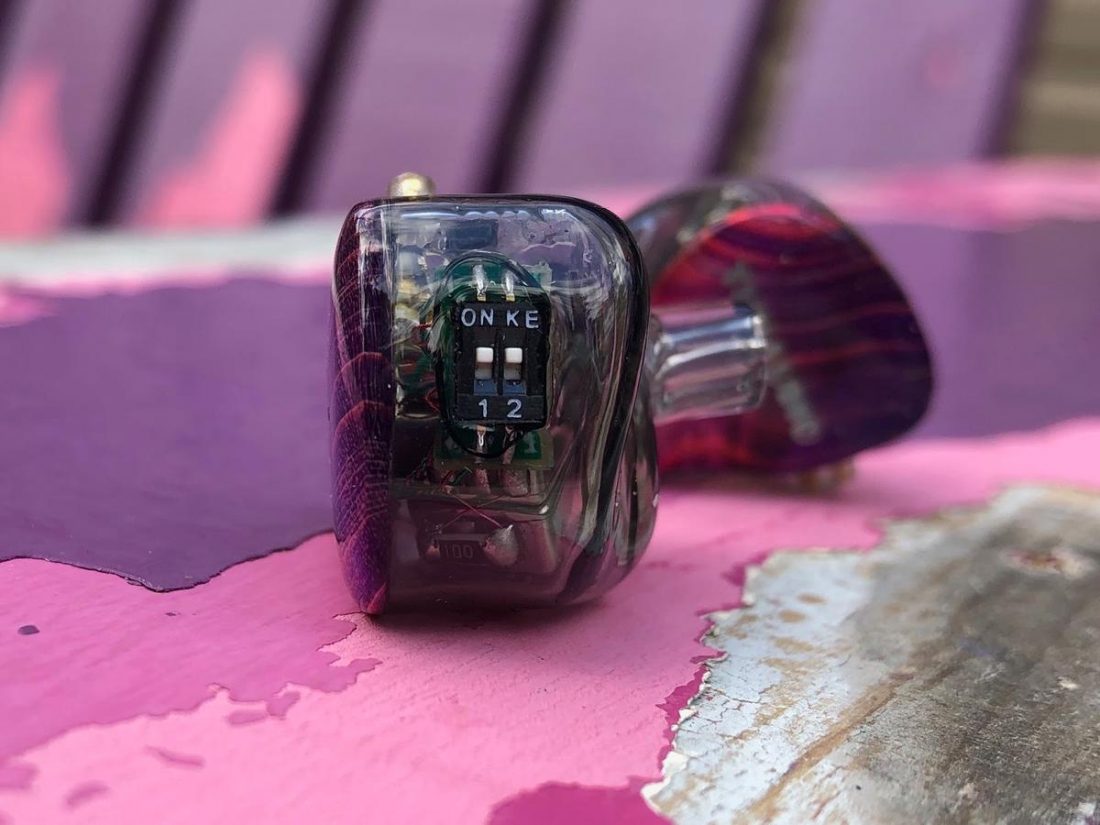
“…the integration of a low and high tuning switch then allows the user to adjust the level of the bass and treble to fit their personal musical preference… a tuning switch to increase or decrease the level of certain channels. This independent circuit mechanism means that the phase is not altered even as you utilize the switch, which ultimately means no worrying about bass bleeds or mid scooping.
The two tuning switches (we decided on two rather than three or four as more does not necessarily indicate proper implementation) allows for four different tuning arrangement going from the standard reference tuning so that the listener can select their desired sound based on their musical preference.” Thieaudio.
However, incomprehensibly labeling them ‘1’ and ‘2’ with the headers ‘ON’ and ‘KE’ somewhat negatively impacts the user experience. Why make things harder than they need to be?
As far as I can decipher:
| Switch Position (x,x) | 2 Up (x,1) | 2 Down (x,0) |
|---|---|---|
| 1 Up (1,x) | Bass up, Treble up (1,1) | Bass up, Treble down (1,0) |
| 1 Down (0,x) | Bass down, Treble up (0,1) | Bass down, Treble down (0,0) |
That is to say, that switch 1 controls the bass and switch 2 impacts the treble. Up position boosts the frequency and the down position decreases it. When both switches are up, it yields a more v-shaped sound profile and with both switches down, it leans towards a more midrange focus.
Turns out, I fancy the switch configuration in the (1,1) up positions. Both switches up is how the Voyager 3 comes in the box and is my preferred listening configuration. Interestingly, with both switches in the down position (0,0), the Voyager 3 appears to measure fairly similarly to the Campfire Andromeda IEMs.
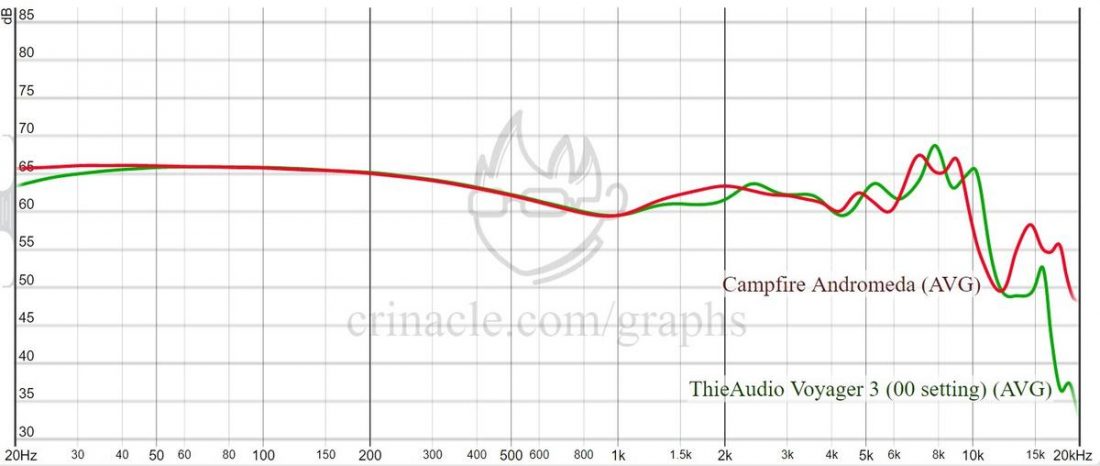
Sound
I played around with the switches until I found what sounded best to my ears and left them there. As noted above, this was the default (1,1 – 1 up + 2 up – both boosted) position. All my notes and comments in the sound section below reflect this position. I found the other switch positions either sacrificed detail or sucked some of the life out of the sound signature. YMMV.
These are IEMs so while they were tested with the Hagerman Tuba desktop amplifier, the majority of my listening was done with a portable setup including my iPhone and Chord Mojo. Music choice and file type was my typical hodgepodge of whatever caught my interest at the time.
I tend to use the included ear tips to give the best representation of what you can expect without further investment, but there are a number of reports of folks having a difficult time with getting proper sound without extensive tip experimentation. I used the large size and found the plain black silicone tips comfortable and provided a decent seal. No real complaints from me.
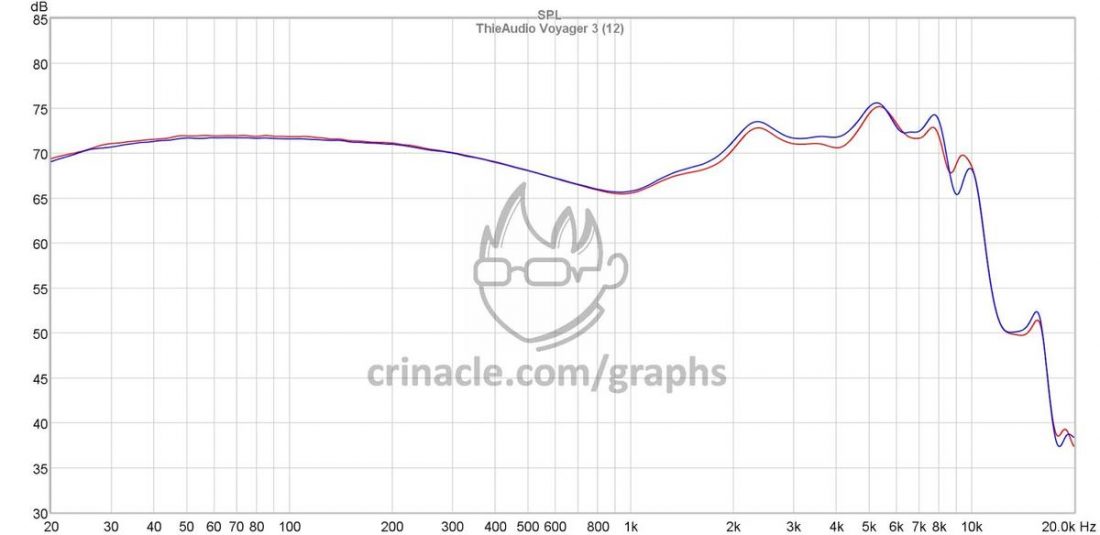
With both switches up, the Voyager 3 are an extremely engaging set of IEMs. Bass is slightly boosted, treble is nicely extended and a very competent midrange means that these are really quite special sounding. The sound is quite refined and it maintains a natural tonality.
The overall impression is a balanced sound, but one with lots of detail and presence.
Separation seems good, with instruments presented in a distinguishable but cohesive manner. It’s in detail retrieval that the Voyager 3 seem to shine.
There is a lot to like here.
Bass
Remember, this is an all BA IEM, which isn’t usually my first choice. However, the Voyager 3 is perhaps my favorite all BA IEM that I’ve listened to. I lean towards hybrid or dynamic driver IEMs because I like a big low end, and BA models often tend towards a somewhat thinner sound.
I’m happy to report that bass response is very much present. While not quite conveying the same impact of a good dynamic driver, it’s still darn good.
The Voyager 3 simply gives the sense of a better, more purposeful tuning than many of the cheaper alternatives. The other guys seem to just jam in as many combinations of drivers as possible and by trial and error find out what sounds the best. The Voyager 3 really do appear to make use of an advanced crossover and bore tuning to get the most of the drivers.
They respond well to EQ if you want a little more low-end, but there is enough clean, tight, weighty thump to sound fun with almost any musical genre.
Midrange
Vocals are great sounding on the Voyager 3. No bass coloration muddying up the midrange means that things sound clear, natural and very well-articulated.
The midrange seems a touch elevated, but that really is to the benefit of instrument separation and vocal engagement. There is a pretty good balance across all the spectrum of reproduced audio frequencies so that one area isn’t really overshadowing or is at the expense of another.
Treble
Treble is appropriately extended and conveys decent air. Again, detail retrieval is very good, and the higher frequencies remain clear and articulate. The Voyager 3 is on the boosted side of neutral, but the high end isn’t exaggerated or shrill. Rather it serves as a competent balance to the weight of the low end.
I find it’s often through an exaggerated (or excessive) treble response that headphones give the impression of good detail, but I find the Voyager 3 does a very good job of walking a balance. Not too much of one or the other, but plenty of both.
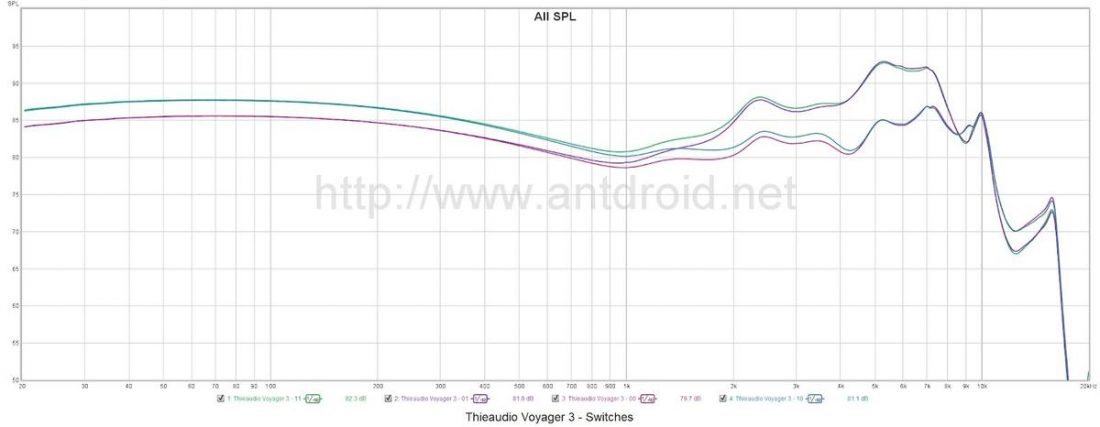
Comparisons
The obvious comparisons to make are with the (recently reviewed) less expensive Moondrop Starfield and the similarly priced Shozy Form 1.4 IEMs. Let me set an important expectation prior to this discussion. I like both these IEMs quite a lot and am in no way saying that they don’t all sound very good. There is really not a bad choice to make here.
Moondrop Starfield are less sensitive and require more amplification to achieve the same volume level as the Voyager 3. They have less bass quantity and are somewhat less v-shaped in sound signature than the Voyager 3 (1,1 switch position). The Voyager 3 sound fuller and more engaging than the Starfield and are definitely a step up from this excellent lower-priced model.
Similarly, the Shozy Form 1.4 requires more power for the same volume. The 1.4 have a more relaxed high end and don’t sound quite so bright and detailed as the Voyager 3. The dynamic driver in the Shozy Form 1.4 does reach a bit deeper and gives a different bass experience than the BA drivers in the Voyager 3. That bass line in Lorde’s Royals is a slower but more visceral experience through the 1.4.
At roughly the same price point, the choice between these two may come down to taste more than ‘quality’.
Conclusion
Thank you to Linsoul for providing a review pair of Thieaudio Voyager 3 IEMs. If you are interested in trying them out yourself, you can find them for sale at Linsoul or occasionally on Drop.
You know what? After spending some time with the Voyager 3, I really want to hear the Voyager 14 IEMs. If this is what the bargain-priced model sounds like, sign me up for the big boys!
But always that rule of diminishing returns rears its ugly head. Price doesn’t always equal improvement and seldom do the two agree in a linear fashion. So perhaps I should stick with this excellent and reasonably priced set.
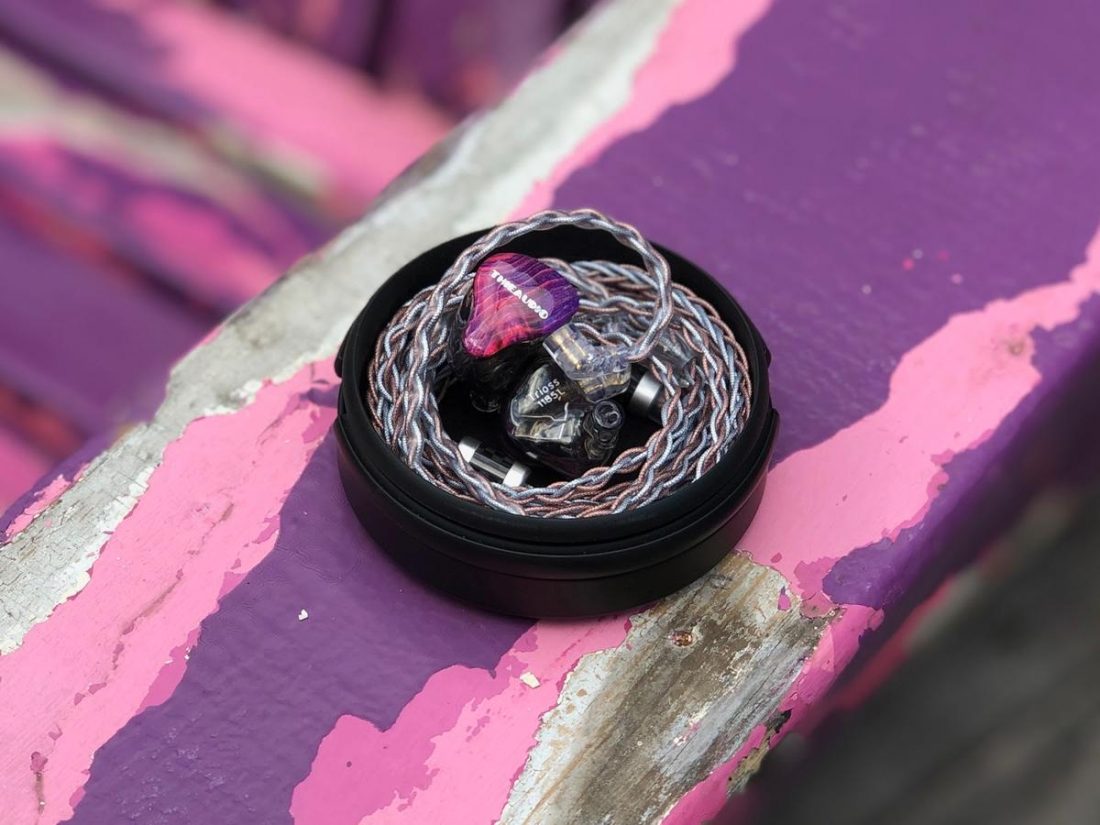
I’m happy to report that the Voyager 3 is a noticeable step up from the excellent Moondrop Starfield. Really in every way. The Starfield sport perhaps my least favorite included cable, especially compared to the great cable packaged with the Voyager 3. The paint job on the Starfield is undeniably beautiful but regrettably easy to chip off. The Voyager 3 are wonders of modern resin molding; tough, beautiful, and flawless.
But let’s talk about what really counts: how they sound. The Voyager 3 just offers more of everything that’s good with the Starfield. And the Voyager 3 doesn’t just sound like a single pair of IEMs. They sound like 4 different pairs of IEMs due to those handy EQ switches!
What I like isn’t necessarily what your ears prefer. And here’s a pair of IEMs that lets you tailor the sound to your preference.
This flexibility makes the Voyager 3 a safe gamble for your purchasing dollar. They are better sounding than the lower-priced models, feature excellent build quality and aesthetics, and have 4 different user-selectable sound signatures (without even venturing down the tip rolling path). The Voyager 3 truly does bring a great deal of value to the table.
The Challenge of In-Ear Monitor Reviews
I’d like to add a caveat. IEMs are notoriously difficult to review and compared to full-size headphones, it is problematic to trust that the review findings will be applicable to all readers.
While the size of one’s ear may impact the comfort or the sound of full-size headphones, small details like the inner shape of a reviewer’s ear and the fit of an IEM greatly impacts not just the listener’s comfort but dramatically changes the perceived performance of an IEM.
This is compounded by the plethora of ear tip sizes, materials, and shapes (which may or may not be included with the IEM) all of which uniquely fit different people. Most significantly, the quality of the ear tip seal within the ear changes the sound. So, beware dear reader, what suits one reviewer may not be applicable to you.
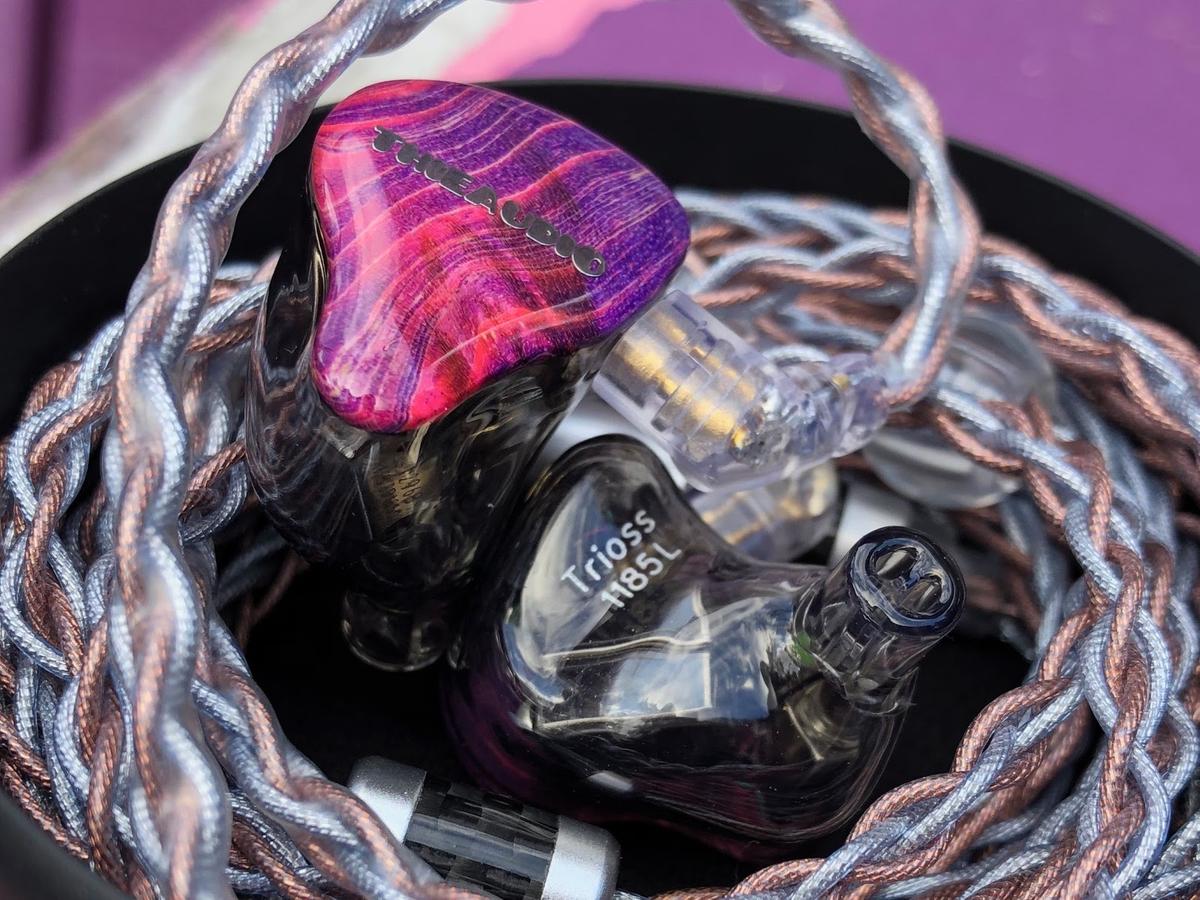
I enjoyed your review of the Thieaudio Voyager 3. I think I’m going to buy a pair ….Once question related to simbilance / hiss … is this related only to louder / noisey sources ? ..and not in any way expected or experienced for normal listening levels.
Thanks !
Vince
The unwanted noise or hiss is a function of the source. A good quality quiet source should be fine while you may run into issues with some amps. I’ve had some desktop amps (NuHybrid for example) that work great with full size headphones but has too much noise for sensitive IEMs.